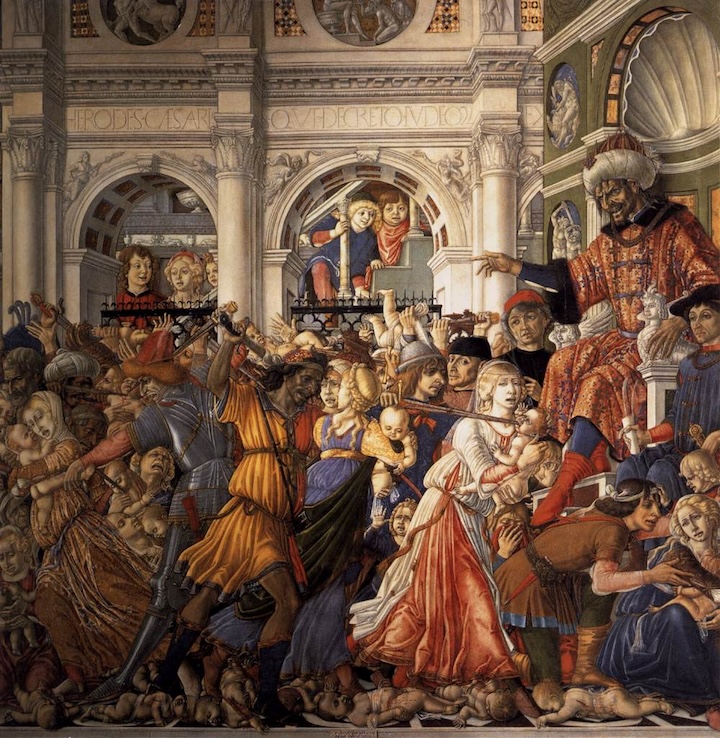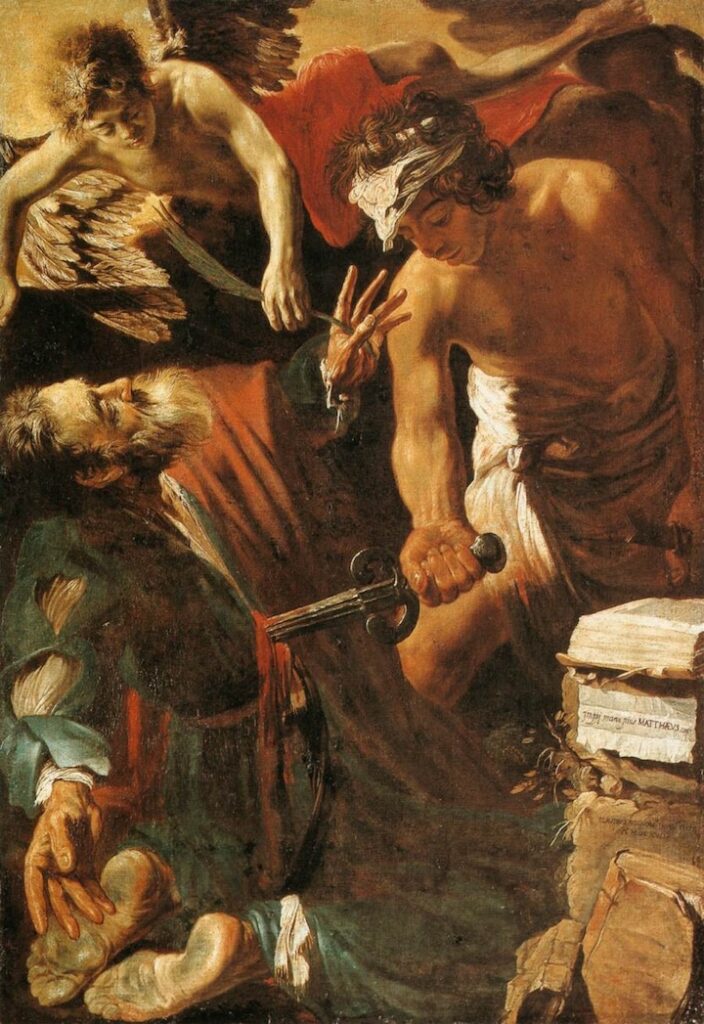This is not a sermon such as Bishop Henry Brougham (David Niven) gives at the end of the film The Bishop’s Wife. And no angel has intervened to write this. Not as far as I know anyhow.
But this does come from watching Christmas movies, which, for a fortnight, television featured at Christmastime. Some were sweet and charming, and others were the more “serious” Biblical narratives that span the Greatest Story from the Incarnation to the Resurrection.
A few of those Biblical epics deal only tangentially with the beginning and end of the life of Christ on earth, focusing instead on stories derived from the persecution of the early Church – films in which St. Peter is a central character, although rarely the star:
Quo Vadis, 1951 (Finlay Currie as Peter)
The Robe, 1953 (Michael Rennie), and its sequel,
Demetrius and the Gladiators, 1954 (Mr. Rennie again)
The Silver Chalice, 1954 (Loren Greene), and
The Big Fisherman, 1959 (Howard Keel).
This last is a total mess, even worse than The Silver Chalice, in which Paul Newman “starred,” a lifelong embarrassment to him. The final scene in The Big Fisherman has Peter in a boat with an Arabian princess setting sail for heaven knows where. Rome, I suppose.
Only in Quo Vadis is Peter’s martyrdom portrayed – dramatically and properly.
Jesus himself would surely be considered a martyr were he not our Savior. And, as we know (either as fact or by legend/tradition) every one of the Apostles was martyred except John.

Many may consider it unseemly in the octave of Christmas to dwell upon anything except the Visitation, the Nativity and the Magi, and the Flight into Egypt. There are, of course, some films that focus principally on the birth of Jesus, including the recent Journey to Bethlehem. Most of them are unwatchable, although they’re still better choices than 1988’s Die Hard with Bruce Willis, which, because the action film is set on Christmas Eve, has become a “holiday classic.” What nonsense!
But the Infancy Narrative in Matthew gives us Christianity’s very first story of martyrdom: the Massacre of the Innocents.
Like the children murdered by Hamas last October, the Holy Innocents were Jewish children, with the difference that their killers were dispatched by a Jewish king. There were no Muslims then, of course, since Muhammad wouldn’t be born for more than a half-millennium.
(I was disturbed and disappointed, by the way, that the Latin Patriarch of Jerusalem, Cardinal Pierbattista Pizzaballa, wore a keffiyeh, the ubiquitous Palestinian scarf, in Bethlehem on Christmas Eve. He is the leader of Arab Catholics in the West Bank, but wearing the keffiyeh was unnecessarily provocative, implicitly laying blame on Israel, if not for the October 7 attacks, then for its response in defending against and hunting down the terrorists.)
The Magi, as we know, came to Bethlehem, met the Messiah, and then left. Maybe in their earlier meet-and-greet with Herod, these wise men came away suspicious of the sick, old king. In any case, St. Matthew tells us (2:12): “And having received an answer in sleep that they should not return to Herod, they went back another way into their country.”
And, of course, in the very next verse, Joseph gets a very specific warning in sleep as well: “Arise, and take the child and his mother, and fly into Egypt: and be there until I shall tell thee. For it will come to pass that Herod will seek the child to destroy him.”

Matthew also tells us (2:16) that Herod:
perceiving that he was deluded by the wise men, was exceeding angry; and sending killed all the men children that were in Bethlehem, and in all the borders thereof, from two years old and under, according to the time which he had diligently inquired of the wise men.
(I’m using the Douay-Rheims 1899 American Edition here. “Men children” gave me pause at first, but then I liked it. What might have been: seed, sapling, mighty oak, but gone, never to grow on earth.)
Did the Magi get the news about the Bethlehem murders? For that matter, did they “follow” the later life of the Christ?
In William Wyler’s Ben-Hur (1959), the aforementioned Finlay Currie plays Balthasar, one of the Magi. He appears in a prologue scene of Christ’s birth, then returns to Israel decades later and meets Judah Ben-Hur (Charlton Heston) when Judah takes on the job of chariot driver for Sheik Ilderim (Hugh Griffith). (“There are many paths to God, my son,” Balthasar tells Judah, “I hope yours will not be too difficult.”). And, finally, he’s with Judah as witnesses to the Crucifixion:
“For this cause, He came into the world,” Balthasar says.
“For this death?” Judah asks.
“This beginning,” the old man replies.
All the brief Biblical stories have backstories. We just don’t know them all.
And when did Our Lady learn of the Massacre of the Innocents, if she did?
Matthew tells us that, hearing that Herod’s son Archelaus “reigned in Judea,” Joseph took his family to Nazareth in the north, which means they didn’t pass through Bethlehem in the south. And nothing in Scripture tells us that, as an adult, Jesus visited Bethlehem to preach. That doesn’t mean he didn’t, of course. But it would seem an odd detail for Matthew and Luke to omit if he did.
Yet Bethlehem is close to Jerusalem and Bethany, places we know Jesus visited. And Bethlehem is the city of King David, and Jesus is referred to as “Son of David.”
He, of course, knew of the Massacre of the Innocents. He always did, knowing all. As he knew his own death. He knew that in the Manger. And God knows yours and mine. Not the precise time and manner of our deaths, but all the infinite possibilities, ever present in the mind of God. Every heartbeat; every cessation of heartbeat.
Increasingly, I think there is not just the death we know is coming out there, but, possibly, martyrdom for many of us as well – the “white” kind, especially in refusing to deny the faith when the culture insists we should, even must. Indeed, it may even be harder to live for Jesus than to die for him. Perhaps realizing that may make it easier to live, period.
Dying in and for Christ begins in every nativity. The end is in every beginning.
















